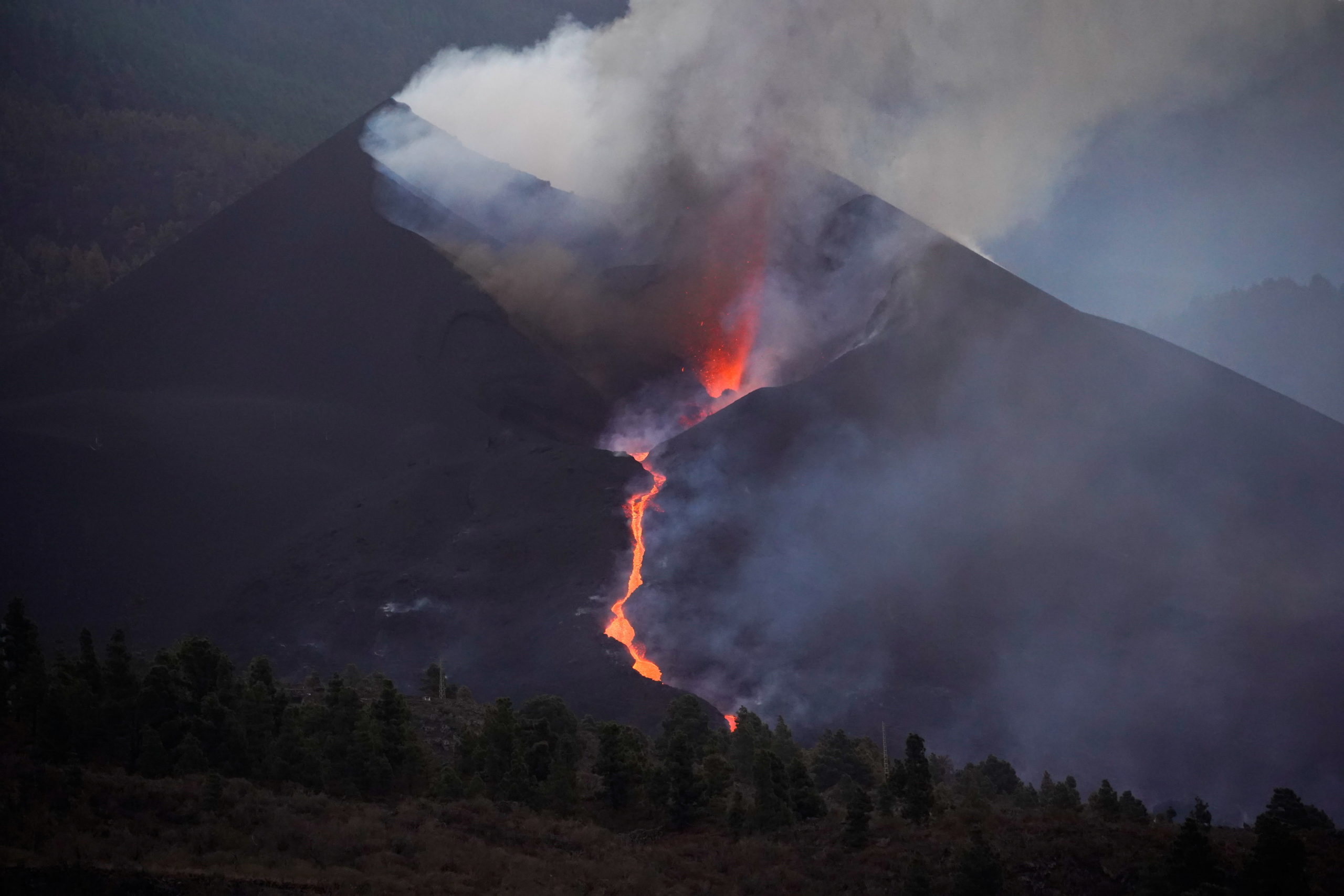Lava blocks the size of buildings falling from La Palma volcano
The Cumbre Vieja volcano continues to erupt on the Canary Island of La Palma, as seen from Tajuya, Spain, October 10, 2021. REUTERS/Juan Medina
LA PALMA, Spain — Blocks of molten lava as large as three-story buildings rolled down a hillside on the Spanish island of La Palma on Sunday while a series of tremors shook the ground three weeks after the volcano erupted.
There were 21 seismic movements on Sunday, with the largest measuring 3.8, the Spanish National Geological Institute (ING) said, shaking the ground in the villages of Mazo, Fuencaliente, and El Paso.
ADVERTISEMENT
The blocks of red-hot magma flowed down the side of the Cumbre Vieja volcano were the size of three-story buildings, the Spanish Institute of Geology and Mining said.
From Monday, members of the Spanish Navy will help clean volcanic ash that covers large parts of the island, Defense Minister Margarita Robles said during a visit on Sunday.
The lava flow, with temperatures of up to 1,240 degrees Celsius (2,264 degrees Fahrenheit), destroyed the last few buildings that remained standing in the village of Todoque, the Canary Islands Volcanology Institute said on Twitter.
There was a partial cone collapse near the volcano’s emission vent on Saturday, Stavros Meletlidis, a spokesman for ING told Reuters.
“The collapse of the northern flank of the Cumbre Vieja volcano has caused the release of large blocks of material and the appearance of new flows that run through areas already evacuated,” tweeted Spain’s National Security Department.
“The lava has reached the Camino de la Gata industrial estate and new buildings.”
Rivers of lava have destroyed 1,186 buildings since the eruption on Sept. 19, the Canary Islands Volcanic Institute said.
Lava has engulfed 493 hectares (1,218 acres) of land, said Miguel Ángel Morcuende, technical director of the Canary Islands Volcanic Emergency Plan (Pevolca) organization.
About 6,000 people have been evacuated from their homes on La Palma, which has about 83,000 inhabitants.
Lightning was seen near the eruption early on Saturday. A study published in 2016 by the journal Geophysical Research Letters found lightning can be produced during volcanic eruptions because the collision of ash particles creates an electrical charge.
/MUF
Subscribe to our daily newsletter
Read Next
Lebanon restores power supply after complete halt
EDITORS’ PICK
MOST READ
Don’t miss out on the latest news and information.
View comments



